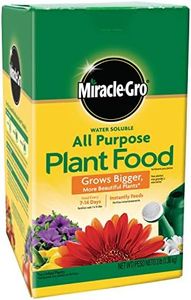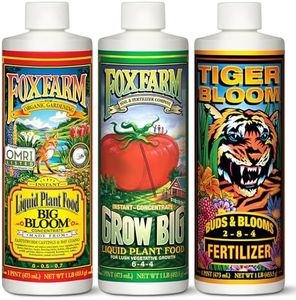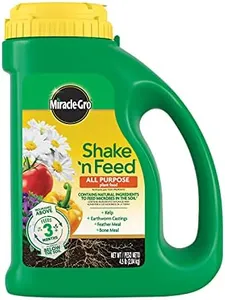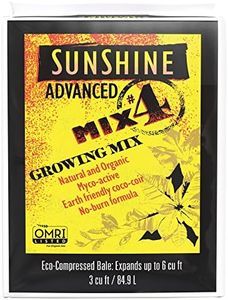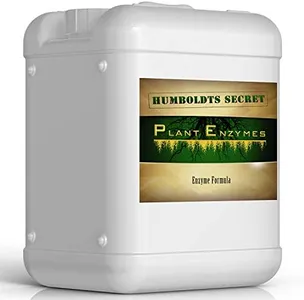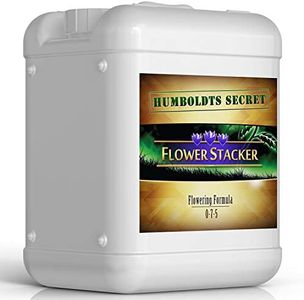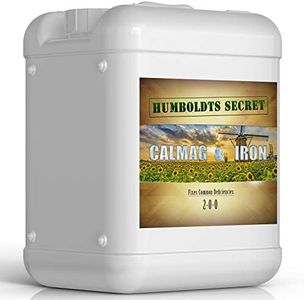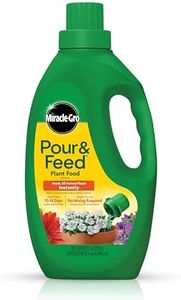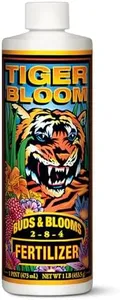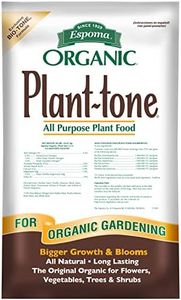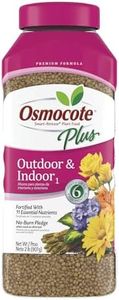10 Best Flower Fertilizer 2025 in the United States
Our technology thoroughly searches through the online shopping world, reviewing hundreds of sites. We then process and analyze this information, updating in real-time to bring you the latest top-rated products. This way, you always get the best and most current options available.

Our Top Picks
Winner
Miracle-Gro Water Soluble All Purpose Plant Food, Fertilizer for Indoor or Outdoor Flowers, Vegetables or Trees, 3 lbs.
The Miracle-Gro Water Soluble All Purpose Plant Food is a versatile flower fertilizer suitable for a variety of plants including flowers, vegetables, trees, and houseplants. One of its main strengths is its NPK ratio, which is designed to provide essential nutrients quickly, resulting in bigger and more vibrant plants. The water-soluble nature of this fertilizer makes it easy to apply using a watering can or the Miracle-Gro Garden Feeder, which can be convenient for both indoor and outdoor gardening.
Additionally, the product claims to be safe for all plants and guarantees no burning when used as directed, which can be reassuring for novice gardeners worried about damaging their plants. A key benefit is the frequency of application - feeding every 1-2 weeks ensures steady nutrient supply without overwhelming the gardener with constant maintenance. However, it's worth noting that this product is synthetic, which might not appeal to those looking for an organic option. It also does not specifically highlight the inclusion of micronutrients, which are essential for the complete development of plants.
Despite these drawbacks, this product is likely to be most beneficial for gardeners seeking a reliable, easy-to-use fertilizer that delivers quick and noticeable results.
FoxFarm Fertilizer Soil Trio Liquid Nutrient: Tiger Bloom, Grow Big, Big Bloom Bottles - (Pack of 3-1 Pint)
Most important from
23706 reviews
The FoxFarm Fertilizer Soil Trio includes three liquid fertilizers—Grow Big, Big Bloom, and Tiger Bloom—that together support different growth stages of flowering plants. Grow Big encourages healthy leaf and stem development, Big Bloom is an organic-friendly formula that can be used with every watering to nourish plants, and Tiger Bloom boosts phosphorus and nitrogen to promote abundant flowers and fruit. This combination of fertilizers is convenient because it covers the full cycle of plant growth, from vegetative to flowering stages.
The trio is liquid-based, making it easy to apply and absorb. Big Bloom is certified organic, which is great if you prefer natural fertilizers, while the other two are synthetic blends with targeted nutrients. Tiger Bloom typically has higher phosphorus for flowers, and Grow Big leans toward nitrogen for leafy growth, which suits flowering plants well. Big Bloom can be applied every time you water, offering flexible feeding without risking nutrient buildup, which is helpful for beginner gardeners.
Since this is a trio pack, you’ll need to switch between products based on your plants’ growth stage, which might require some learning or following the included conversion chart. This fertilizer set is a reliable choice for gardeners looking to boost their flower and fruit production and works best for those growing flowers or fruiting plants at home who want a balanced, easy-to-use, and partially organic nutrient solution.
Most important from
23706 reviews
Miracle-Gro Shake 'N Feed All Purpose Plant Food, For In-Ground and Container Plants, Feeds for up to 3 Months, 4.5 lbs.
Miracle-Gro Shake 'N Feed All Purpose Plant Food is designed to nourish plants for up to three months, making it easy for gardeners to maintain healthy and productive plants with minimal effort. The granule form of this fertilizer simplifies application, allowing users to evenly distribute and work it into the soil for both in-ground and container plants.
This versatility is ideal for users with a variety of plants, including flowers, vegetables, and herbs, whether grown indoors or outdoors. One of the standout features is the inclusion of vital micronutrients, which support stronger and more vibrant plant growth compared to unfed plants.
The product is particularly beneficial for those seeking a straightforward and effective fertilizing solution without the need for frequent applications, as the recommended frequency is only every three months. Miracle-Gro Shake 'N Feed All Purpose Plant Food offers convenience, effectiveness, and versatility, making it a solid choice for both novice and experienced gardeners looking to support their plants' health and growth.
Buying Guide for the Best Flower Fertilizer
Choosing the right flower fertilizer is essential for ensuring your plants grow healthy and vibrant. Fertilizers provide essential nutrients that flowers need to thrive, and selecting the right one can make a significant difference in the health and appearance of your plants. When picking a flower fertilizer, consider the specific needs of your flowers, the type of soil you have, and the growing conditions in your garden. Understanding the key specifications of fertilizers will help you make an informed decision and ensure your flowers get the best possible care.FAQ
Most Popular Categories Right Now


